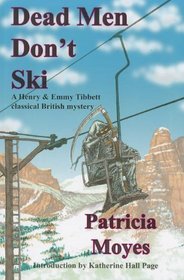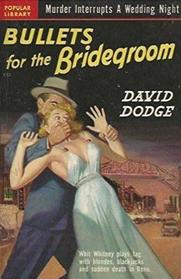Dead Men Don’t Ski by Patricia Moyes
Review by Matt B. (BuffaloSavage)
In the first Inspector Henry Tibbett mystery published in 1959, Henry and his wife Emmy take a vacation at a ski resort in the Italian Alps near the Austrian border. It’s in fact a working vacation because his superiors in Scotland Yard have asked Henry to be on the lookout for drug smugglers.
As in the second novel starring Tibbet, Down among the Dead Men, a seemingly accidental death has already occurred before the novel actually gets started. That is, one of the ski instructors ended up in a crevasse because of too much risk-taking.
But another hotel guest, detested by about everybody who had contact with him, is discovered shot dead on the ski lift. Henry joins a local copper and greenhorn Inspector Spezzi to investigate the murder.
Moyes likes to set her mysteries in different locations, such as Geneva (Death on the Agenda) and a London movie set (Falling Star). Like a cozy writer usually does , she employs stock characters: the bright young thing, the good guy with the dodgy past, the Lord Peter type, the mysterious woman, the emotional foreigner, the dumb colonel, the hideous Hun, etc. Henry and Emmy are reassuringly normal – no existential angst on them and Henry’s preternatural intuition (his “nose”) isn’t weird.
Moyes also has a Simenonian sense of the closed community, such as the locals versus the tourists and the local commercial fishers versus the weekend boaters (again Down among the Dead Men). Finally, though I’m not astute when it comes to puzzles, she unfolds the incidents smoothly with only a couple of too obvious techniques “to make ‘em wait,” as Wilkie Collins urged. This one, unexpectedly, did not have draggy spots although it goes almost 300 pages, long for a mystery in my book.
All in all, a strong effort for a first novel and well worth reading.




